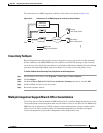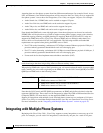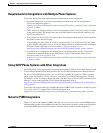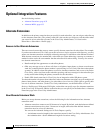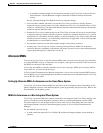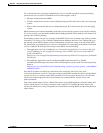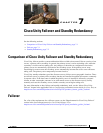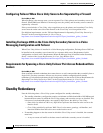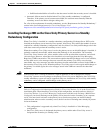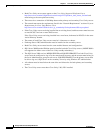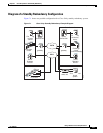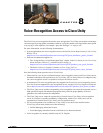
CHAPTER
7-1
Design Guide for Cisco Unity Release 5.x
OL-14619-01
7
Cisco Unity Failover and Standby Redundancy
See the following sections:
• Comparison of Cisco Unity Failover and Standby Redundancy, page 7-1
• Failover, page 7-1
• Standby Redundancy, page 7-2
Comparison of Cisco Unity Failover and Standby Redundancy
Cisco Unity failover provides system-malfunction failover within a data center. Failover consists of two
servers, a primary and a secondary. In general, the primary server is active and taking calls, while the
secondary is inactive and not taking calls. Any changes to subscriber or configuration data on the
primary server are automatically replicated to the secondary server. If the primary server stops
functioning for some reason, the secondary server automatically becomes the active server and starts
taking calls. The primary server temporarily becomes inactive.
Cisco Unity standby redundancy provides disaster-recovery failover across geographic locations. There
are still two servers, a primary and a secondary, but they are installed in separate data centers, commonly
in separate cities. If the data center in which the primary server is installed is affected by a natural
disaster or other catastrophe, someone in (or with remote access to) the disaster-recovery facility
manually activates the secondary server, and the secondary server begins taking calls.
For more information on how failover and standby redundancy work, see the “About Cisco Unity
Failover” chapter in the applicable Failover Configuration and Administration Guide for Cisco
Unity at
http://www.cisco.com/en/US/products/sw/voicesw/ps2237/products_feature_guides_list.html.
Failover
For a list of the requirements for a failover system, see the “Requirements for Cisco Unity Failover”
section in the System Requirements for Cisco
Unity Release 5.0 at
http://www.cisco.com/en/US/products/sw/voicesw/ps2237/prod_installation_guides_list.html.



